The Great Flood of 1913 was devastating for Dayton, as floodwaters as high as 20 feet engulfed huge areas of the city. The damage to homes, businesses, factories, and infrastructure was over $100 million in 1913 money (roughly $3 billion today). But among the wreckage there are also plenty of stories how the Dayton community rallied together to recover and rebuild for a new era
Among the businesses crippled by the flood was Dayton’s most beloved downtown retail store, Rike’s, which had only just opened in 1912. During the flood, 8 feet of water swept into the store destroying the whole first floor and all of its merchandise.
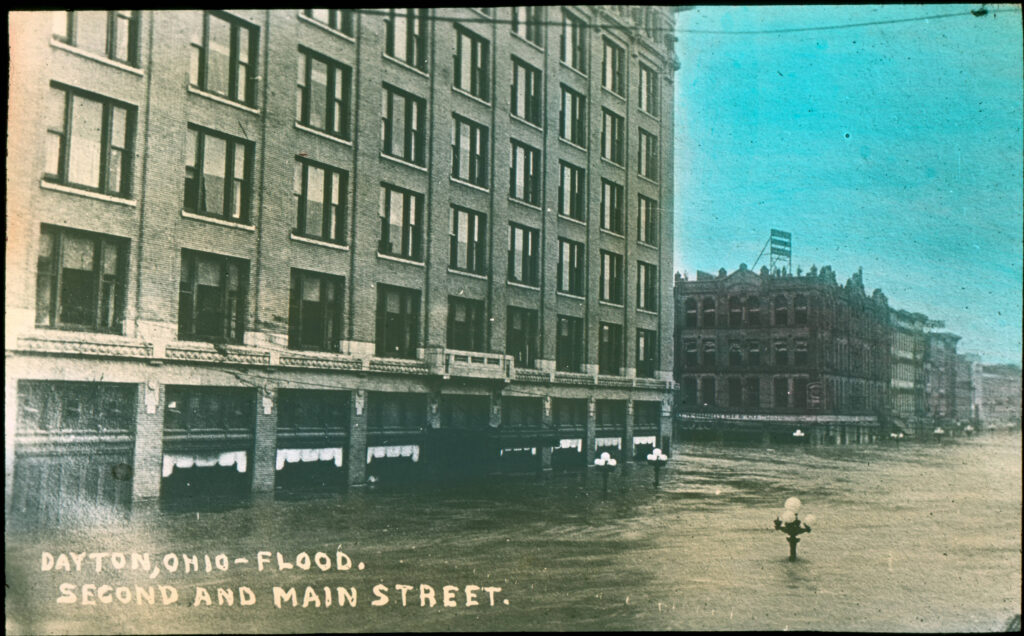
This led to financial ruin for Rike’s and the store faced bankruptcy. Owner Frederick Rike was unable to get a loan from local bank, but he was persistent and eventually succeeded in obtaining a loan from the Hathaway company out of New York City, “on the basis of personal reputation rather than faith in his company,” but ultimately his business recovered decisively.
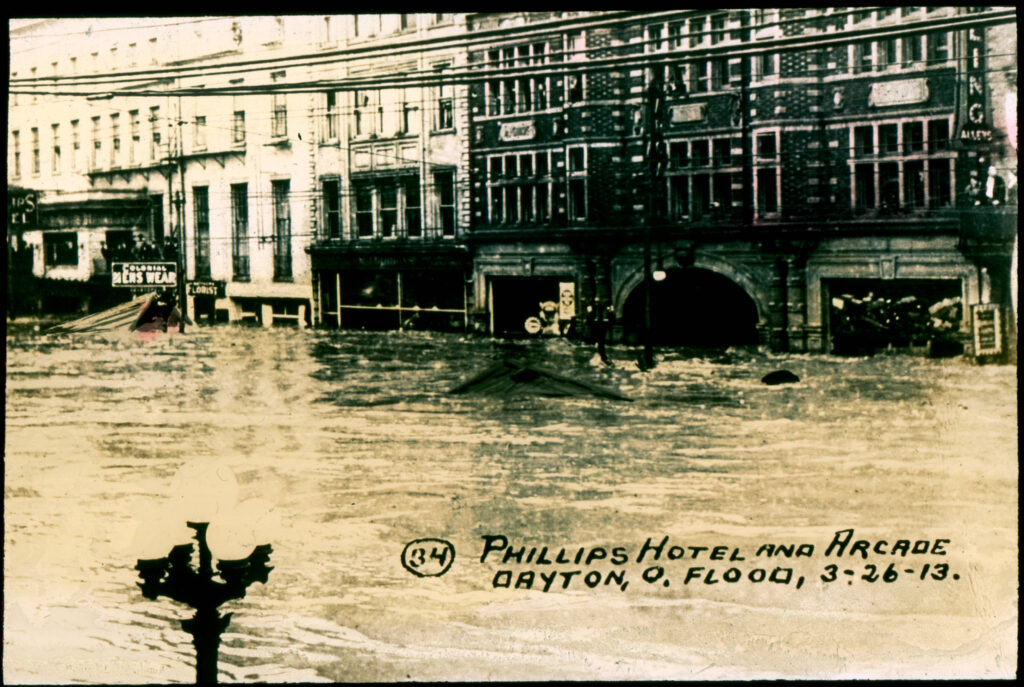
The flood also stranded 250 people in the Dayton Arcade, which hadn’t even been open a full decade when the disaster hit. It suffered major damage but perhaps even more damaging was the fact that fear of floodwaters caused many of Dayton’s prominent downtown residents to move to streetcar suburbs like Dayton View that sat on higher elevation.
This meant less foot traffic for Arcade merchants and struggles that would last far longer than the flood cleanup, but a dedicated group of shoppers and supporters was always there to help steer the Arcade through tough times, and that has remained the case to this day with its recent major redevelopment.
The effect of the flood on Dayton’s most prominent company, NCR or National Cash Register, was more complex. In fact, some say it may have actually saved the company. Prior to the flood, company was in precarious legal situation due to its ruthless tactics to stifle competition and 30 officials, including founder John H. Patterson and Edward Deeds, were indicted for violating the Sherman Antitrust Act. They would actually be sentenced to one year in prison, but the company’s heroic rescue efforts during the flood swayed public opinion and likely played some role in charges being dropped on appeal. In the aftermath of the flood, NCR’s factory buildings were transformed into places of refuge, workers served meals to the hungry, and a tent city was set up for those displaced.

Patterson directed NCR to build 275 rescue boats, and he sent employees out to save stranded Daytonians and take them to safety. One worker saved 100 people singlehandedly, and Patterson who was 68 at the time even joined the efforts.
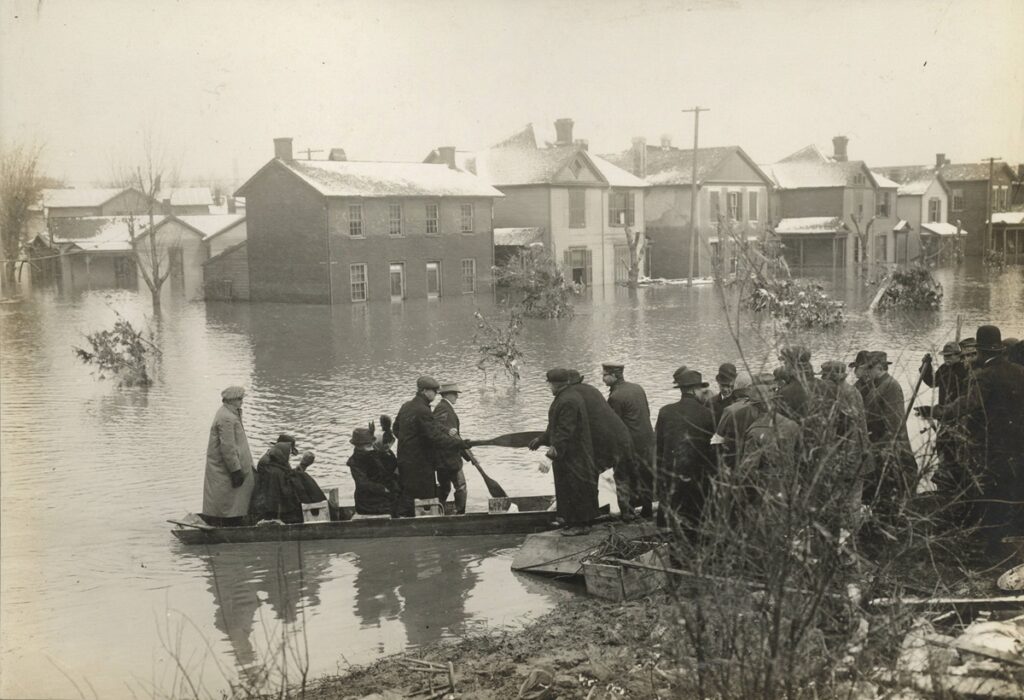
The flood was unfortunately the death knell for other businesses, like the Barney and Smith Car Company whose buildings were invaded by 14 feet of water, causing massive damage. Also, “teak and mahogany, used to make the railroad cars, was found as far downriver as New Orleans.” The company, in business for over 70 years, tried to rally but was unable to survive.
And finally, another piece of infrastructure that served businesses of all types in Dayton, the Miami and Erie Canal, was already in severe decline due to the proliferation of railroads, but the flood destroyed many sections of it and hastened its complete abandonment.
I also recorded a video about the flood where I expand on some of these stories and show other historic images. You can view it below:
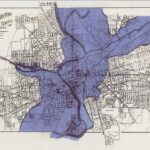
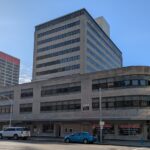
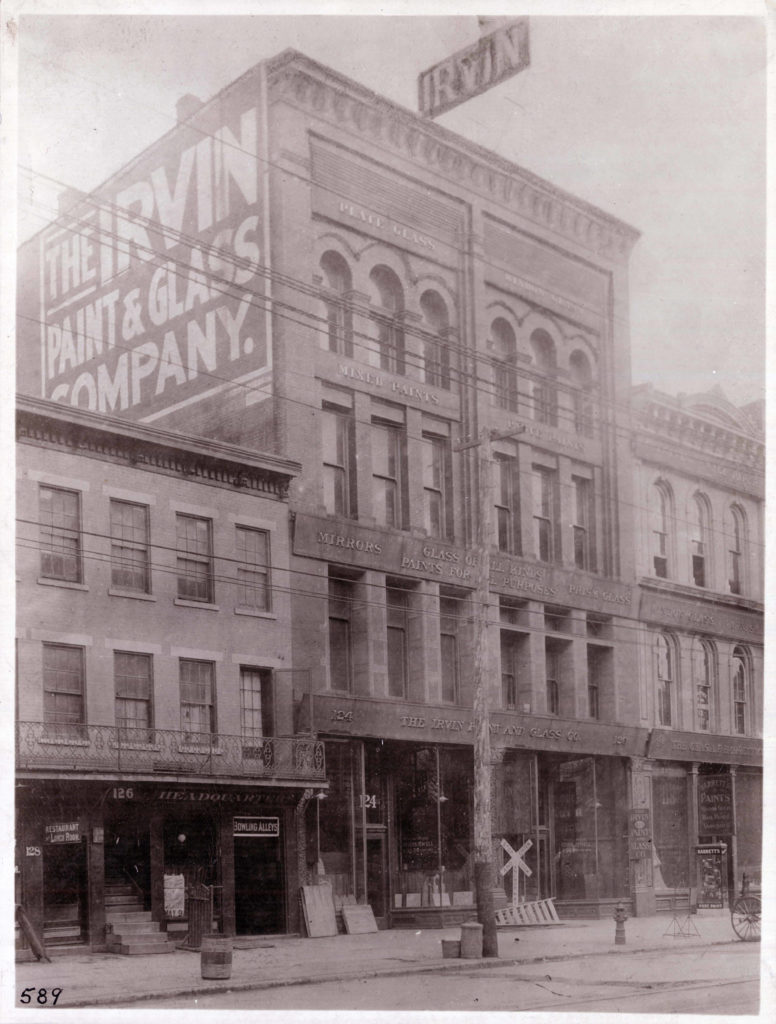

Leave a Reply